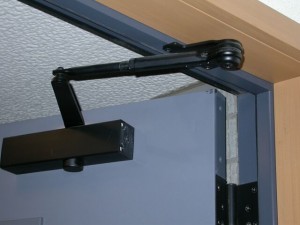 I was having a conversation yesterday about our Electromechanical Solutions department and the challenges the project managers are facing during specification. If our team (who is specifically trained in the fields of electrical and mechanical hardware) is facing challenges – someone with little or no knowledge of the industry is having these issues times ten. What better way to wrap up our “Things Your Architect Doesn’t Know” mini-series?
I was having a conversation yesterday about our Electromechanical Solutions department and the challenges the project managers are facing during specification. If our team (who is specifically trained in the fields of electrical and mechanical hardware) is facing challenges – someone with little or no knowledge of the industry is having these issues times ten. What better way to wrap up our “Things Your Architect Doesn’t Know” mini-series?
Every retrofit is different, every location is different, and every customer is different. There is no one-size-fits all answer to “how do I integrate access control into my building?” Unfortunately, we see a lot of specifications and door schedules that tend to stay within their comfort zone, regardless of other options or exceptions. It takes a combination of hardware/code knowledge, experience, and ingenuity to create a unique solution for every request that comes through. Since the department was launched these have been the reoccurring obstacles (but definitely not the only ones):
Electromechanical Solutions: Controlled Access/Free Egress
This is the most common application of access control. The access control reader limits access but the door hardware always allows free egress at all times.
With this application the goal is to control access not egress.
For example, our office uses a simple card reader installed on our front and side doors. Employees have cards instead of keys and we have the flexibility of activating/deactivating remotely. While the front door is locked on the outside, you can always exit the building by simply engaging the door-mounted paddle.
These types of systems are flexible, with the capability of remaining secure 24/7 or during specified times. We’ve found it most convenient to leave the door unlocked during normal business hours and require electronic access after 6:00.
Not every business uses their system this way – many require electronic access at all times. Each application has its place and are perfectly acceptable, as long as the door is equipped with code compliant exit hardware.
Electromechanical Solutions: Access Control on Egress Doors
This application would provide the ability to control access and egress. Egress doors are subject to strict codes due to the implications of egress being prohibited.
Doors with Electromagnetic Locks:
If there is no exit device in place:
- NFPA 101 and the IBC require the lock be released by a motion activated sensor to detect approaching occupants.
- A marked push button that will release the lock for 30 seconds and is independent of the access control system
- The push button should also release in the event of loss of power to the lock or sensor and by actuation of the fire alarm/sprinkler/smoke detection system.
- Some jurisdictions have modified the requirements for access control on egress doors; it’s important to know your local regulations before beginning your access control plan.
If there is an exit device in place:
- The release device is typically panic hardware or a lockset with a request-to-exit switch, or a touch-sense bar – which will release the mag lock when the hardware is actuated.
- If power is lost to the switch the mag lock should release.
I haven’t even mentioned delayed egress locks, stairwell doors with reentry, elevator lobby doors, or special egress locks. This is why you probably need a professional help with the integration of your electromechanical solutions and hardware. For specific code requirements for all of these applications check out this article – Decoded: Doors with Access Control
Mechanical Hardware and Electrical Hardware – It’s a Team Effort
With good intentions, many customers want to keep their current hardware and simply add the electromechanical components. I get it, budgets are budgets and every penny helps. But this can create a security flaw in the system.
In order to retain the integrity of your access control system AND remain code compliant, it’s crucial to have appropriate mechanical hardware installed. There are different types of locking hardware that can be installed on access controlled doors depending on the door’s function; different code sections apply to each.
Did you know? In most states, electromagnetic locks require specific permits to be integrated into the building’s fire system.
**Always remember – you don’t have to sacrifice the visual appeal of your hardware or opening. There are plenty of attractive hardware options available that are code compliant and meet the requirements of an access control system. Check out this post – Architectural Hardware.
This is simply a reminder that the intricacies of our industry are vast. Your architect may be able to recite these code requirements in their sleep, or maybe they don’t deal with access control at all. When possible, it’s easier to install an access control system during construction versus retrofitting.
Check out the rest of the “Things Your Architect Doesn’t Know” series:
Gate Hardware – Things Your Architect Doesn’t Know
Construction Cores – Things Your Architect Doesn’t Know
Specifying Your Restroom – Things Your Architect Doesn’t Know
Google

